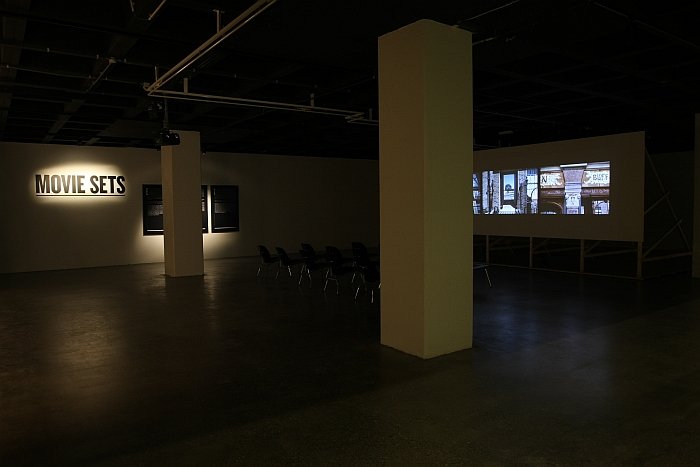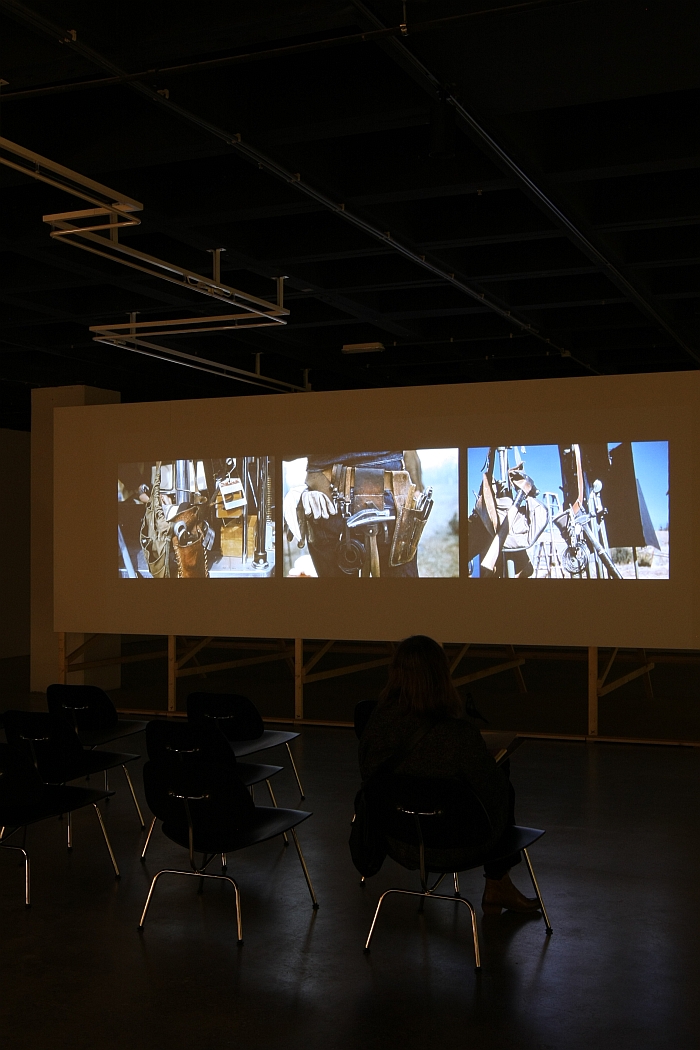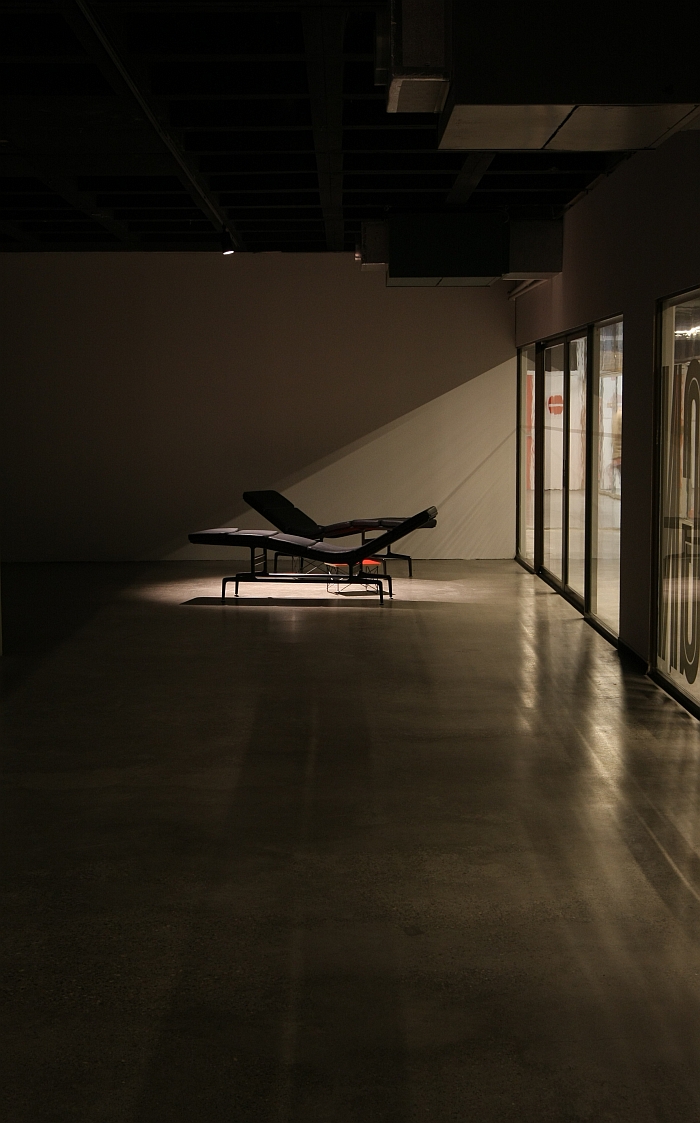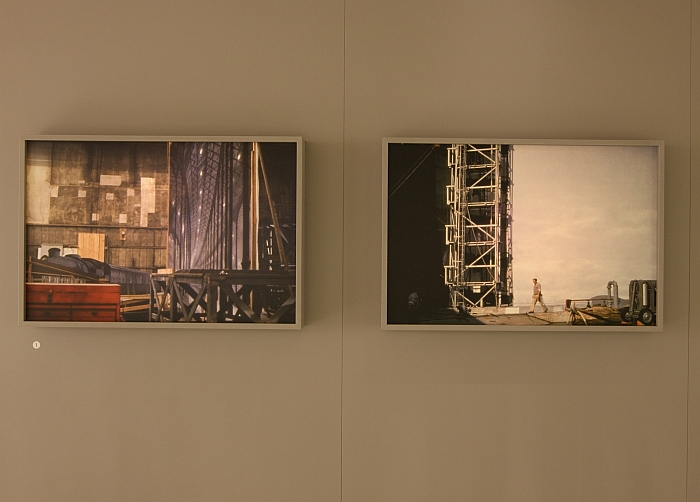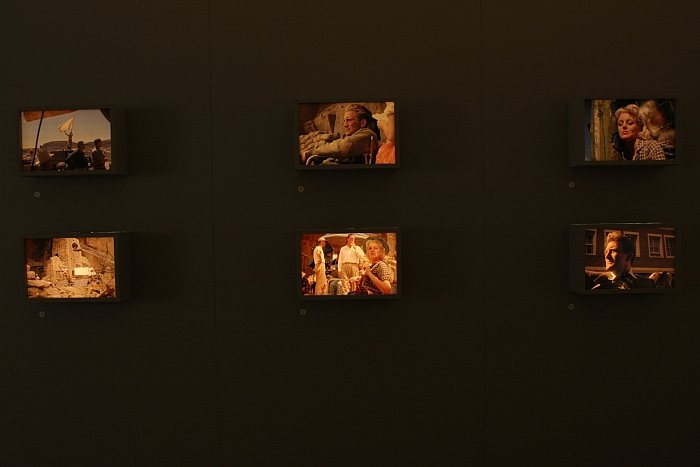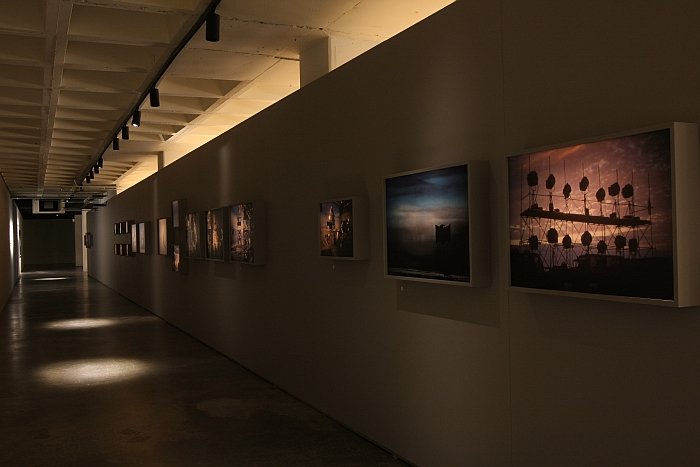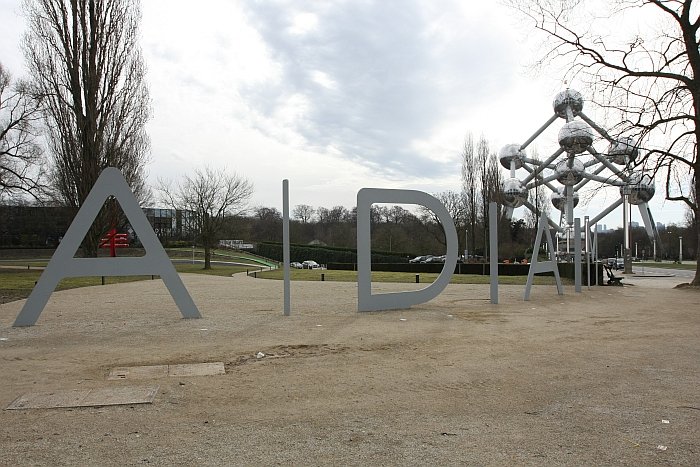With the exhibition, The World of Charles and Ray Eames at the Barbican Art Gallery London coming to an end, it is most timeous that the Art & Design Atomium Museum, ADAM, Brussels are offering through their new exhibition Eames & Hollywood an opportunity to explore in a little more detail one of those many, many Eames' Worlds. And no, not film. Photography.
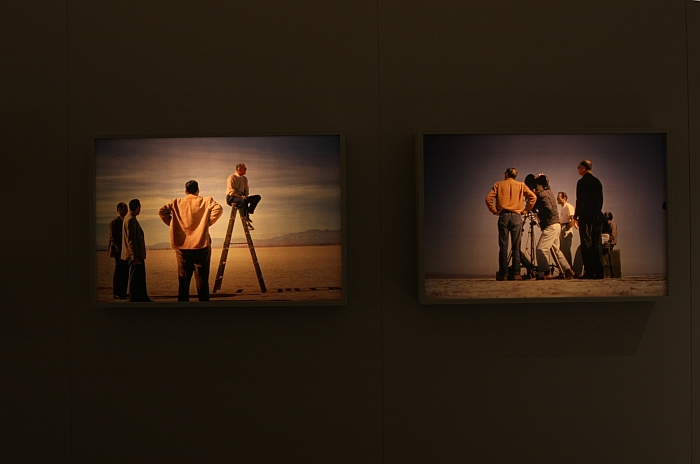
Formally opened in December 2015 ADAM is a new design museum for Brussels, arguably the first dedicated design museum for Brussels, and as the name implies it is sited on the grounds of the 1935 & 1958 Brussels International Expositions, nesting comfortably between the '58 Atomium and the '35 Art Deco exhibition halls. Principally focussing on the so-called "Plasticarium collection", a collection of some 2000 plastic objects of all genres, dating from the 1950s until today and which is presented in the museum's permanent exhibition space, Eames & Hollywood is ADAM's first temporary exhibition, which of course raises the obvious question of why inaugurate such an institution with an exhibition about Eames photography?
"The idea came from curator Alexandra Midal" explains ADAM's Exhibitions Director Arnaud Bozzini, "one day she showed me some of the photos and I was very impressed by the quality of the pictures and was instantly fascinated by the idea of staging an exhibition which explained that Charles and Ray Eames are not just about design or architecture or chairs, but that there are also the photographs, and that photography was a major component in their thinking about design and art."
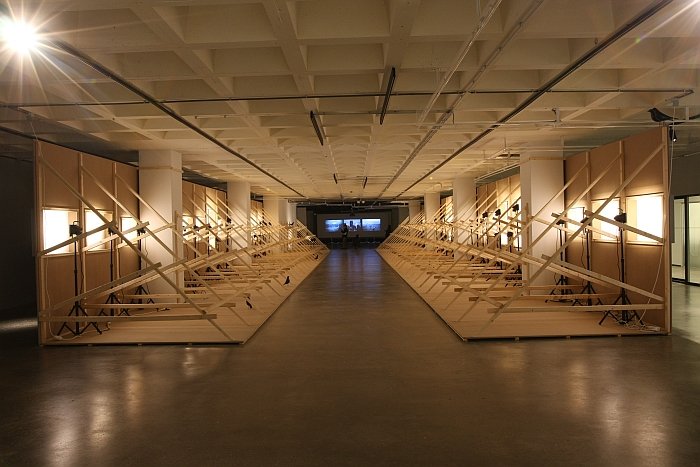
While most people who are aware of Charles and Ray Eames' work are also aware that photography played a role in their creative output, one need only think of their numerous exhibition design projects or films for examples, only very few are aware of the true scale of their photographic legacy: the Eames Collection at the Congressional Library in Washington holds some 750,000 images from the pair.
750,000.
Seven hundred and fifty thousand photos.
A figure which naturally poses the question as to where this interest arose, and who was, as it were, the motor behind the shutter release?
"Although I'm a big believer in the fact that all the work they did together reflects both of them", says Eames Demetrios, grandson of Charles Eames and current Director of the Eames Office, "with photography I think you'd have to say Charles was the initiator. His father died when Charles was 14, after his death Charles explored his father's darkroom and subsequently taught himself photography and film processing, and from then on photography played an important role in his life. At Cranbrook for example he spent a lot of time in the darkroom, helped out the college photographer, and also shot his first film. And so while Ray did work with photography, with Charles it was an integral element of his approach"
Could that, we venture cautiously, be the reason for the prominent, at times very experimental, use of visual imagery in the Eames canon, for all in their exhibition work?
"I think so," answer Eames, "but then you shouldn't forget that Ray had a real gift for colour, she had for example an incredible colour memory, which in terms of exhibitions is a fantastic combination because they had different ways of creating great visual experiences"
A taste of those visual experiences can be found in Eames & Hollywood.
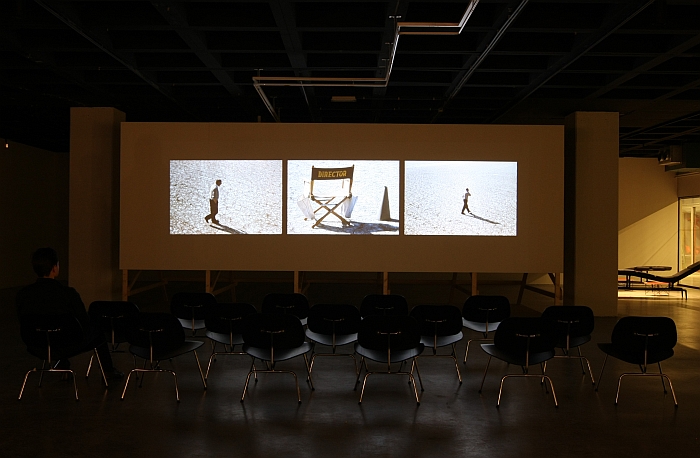
Curated by the design historian and theoretician Dr Alexandra Midal, the principle focus of Eames & Hollywood is a collection of 240 photos taken by Charles Eames on the sets of various Billy Wilder movies, and for all the so-called Movie Sets series which Charles Eames used for a presentation during the sixth and final of his Charles Norton Lectures at Harvard in 1971, and which Alexandra Midal "re-discovered" in context of a 2013 project concerned with re-imagining the film "Think" which Charles and Ray Eames created for the IBM Pavilion at the New York World’s Fair in 1964. "Amongst all the images I selected there was one series called "Movie Sets" which was so impressive it didn't leave me in peace and to which I kept returning", explains Alexandra, "and so that was in a way an introduction for me into the relationship the Eameses had with images, and which I then developed into Eames & Hollywood"
And what was it that so interested you about Movie Sets series, why did it stand out so much?
"At first I was surprised by the topic itself, I knew that the Eames and Billy Wilder were friends, but what is the point of going to the movie set and taking photos? What was the idea behind that? So that interested me. And then I was absolutely fascinated by the décor and the way Eames took photos of things like scaffolding and all the other apparatus which makes an illusion become reality, and I thought that was a very interesting vocabulary for designers. And finally the photos themselves are extremely strong and potent and bring across the human story of film making, not just the stars, but the workers, the technicians and the processes."
Presented triptych style as three screen slide show, the Movie Set series combines images taken from Billy Wilder sets complimented by an audio backing track featuring the chatter of the crews mixed with Burt Bacharach's "Not Goin' Home Anymore" from Butch Cassidy and the Sundance Kid.
According to Eames Demetrios Movie Sets is one of fifteen similar slide shows Charles and Ray Eames completed in the course of their careers; slide shows which although never achieving much in the way of public or critical attention, did receive a lot of positive attention from the younger members of the Eames family, "As a kid we would see these sort of things all the time, and they were really fascinating" recalls Eames, "partly because you can't take it all in at once, your eye moves around and by the time you notice something the screen has moved on to something new"
And this feeling of always being on the look out for something you've missed, checking that you really did see what you thought, of boundlessness visual stimuli is very present in the ADAM presentation. And is very satisfying.
In addition to the slide show individual stills allow the viewer to concentrate in more detail on some of the individual shots and Charles Eames visual composition techniques and choice of perspectives.
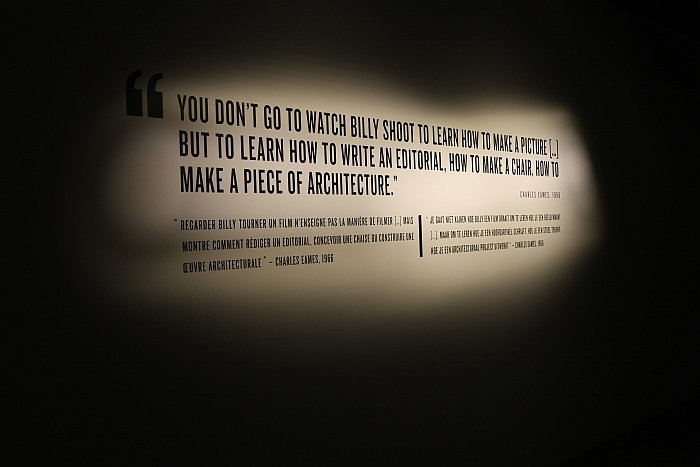
We have a somewhat functional relationship with photography, for us it is a purely practical medium through which to document, demonstrate, or occasionally, prove. Cameras can lie, but a photo is always worth a thousand words. Photography as "art" however isn't something we really understand. Particularly street photography. Never understood the fascination.
Which theoretically means we should have extreme difficulties with Charles Eames' photography, at least if we follow the opinion of Alexandra Midal, "Charles Eames went everywhere with his camera, he was real photo maniac, but I don't think he photographed as an architect would do, or as a designer would do, his photographic language is very much that of an artist"
For us however the photos are much more a pure documentation: of the film making process, of the tools of the film making process, and of a time long gone, for although film making is still essentially the same process, changing technology means much of what Charles Eames photographed is museum material itself these days. And at the risk of contradicting Alexandra Midal, something we know we are in no sense qualified to do, what particularly caught our attention was all the close up shots of innocuous looking objects, tools and shapes, for us it feels like a designer collecting influences which may at that moment make no sense but which at a later date prove the answer to a seemingly insolvable conundrum. And so, yes, photographing like a designer.
Just as important as the photos for Eames & Hollywood is the exhibition design by ECAL Lausanne graduate Adrien Rovero, "I wanted a strong exhibition design, I wanted an exhibition design which stood in dialogue with the photos" explains Alexandra Midal, "I wanted the scaffolding, I wanted the décor!!" And that is what Adrien Rovero has delivered in a very intelligently conceived design which not only fills the 900 sqm temporary exhibition space at ADAM Brussels without dominating it or restricting the visitor, but which also allows the photos to be displayed as they are, slides to be projected from behind, rather than printed photos.
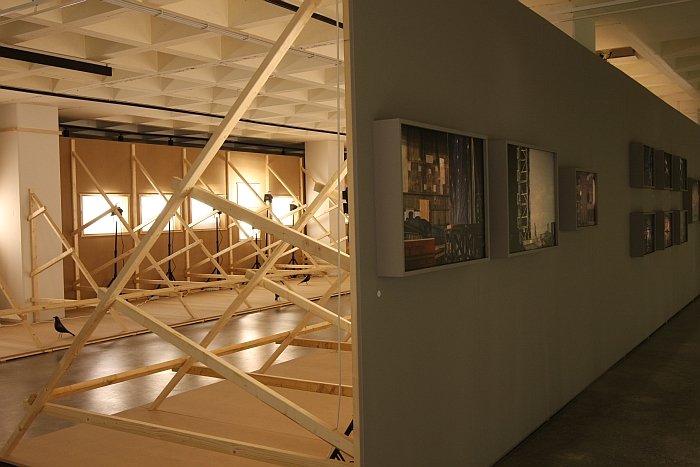
As far as anyone is aware Eames & Hollywood is one of the first ever Charles and Ray Eames photo exhibitions, and certainly one of the first museal exhibitions in Europe. An astonishing fact given the importance the visual image played in the pair's oeuvre, and the number of photos in the collection. Yet not something anyone can readily explain. If perhaps they weren't offered exhibitions, weren't interested....?
Similarly if the Billy Wilder photos are the best place to start exploring the Eames' photographic oeuvre, isn't a question we can answer: because we haven't seen that many Eames' photos. Alexandra Midal has, has generally more experience of such things than us, and so when you hear her wax lyrical about the Movie Sets collection then you get the definitive feeling that it is at least not a bad place to start. It is certainly a well conceived and well realised exhibition which may not have the depth of a larger scale photographic retrospective but which neatly, competently and entertainingly highlights a little researched corner of the Eames' universe, and which thus helps us all understand the pair just a little better.
Eames & Hollywood can be viewed at Art & Design Atomium Museum, ADAM, Belgiëplein, Place de Belgique, 1020 Brussels until Sunday September 4th
Full details, including opening times, can be found at http://adamuseum.be


